HOW YOUR BROWNSTONE LOST ITS SOUL (1915)
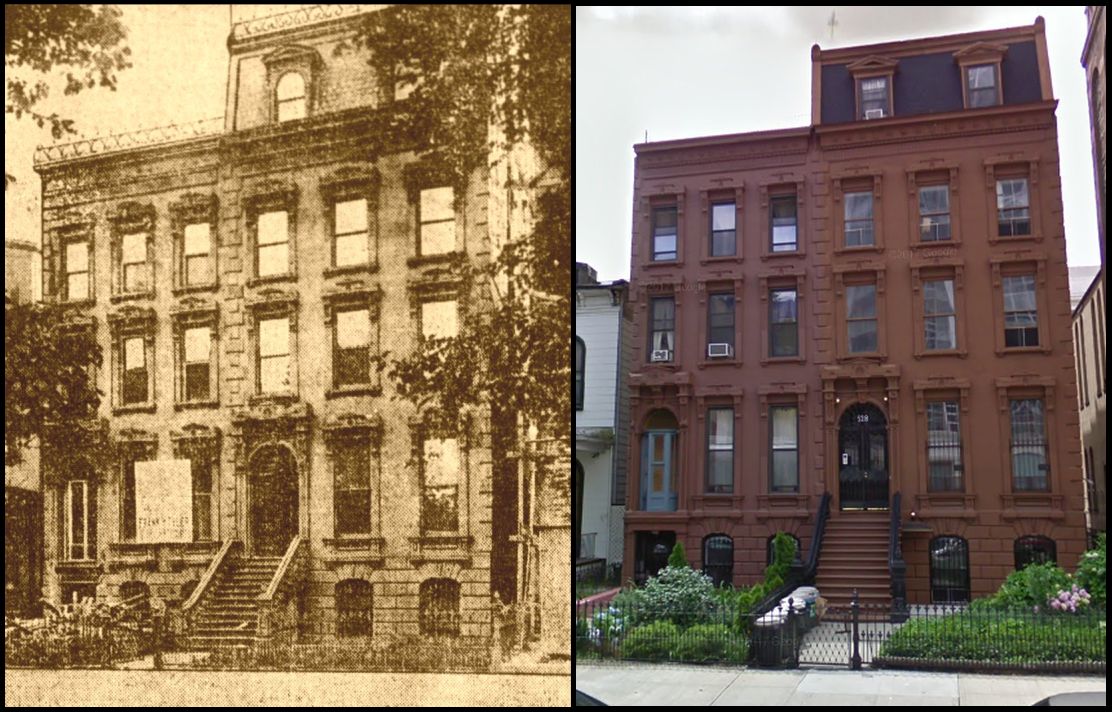
Brownstone Detectives investigates the history of our clients’ homes.
The story you are about to read was composed from research conducted in the course of one of those investigations.
Do you know the history of YOUR house?
********************************************************************************************************************************
It started just 20 years after construction began on “Brownstone Brooklyn” – our brownstones and townhouses began to lose their “souls.”
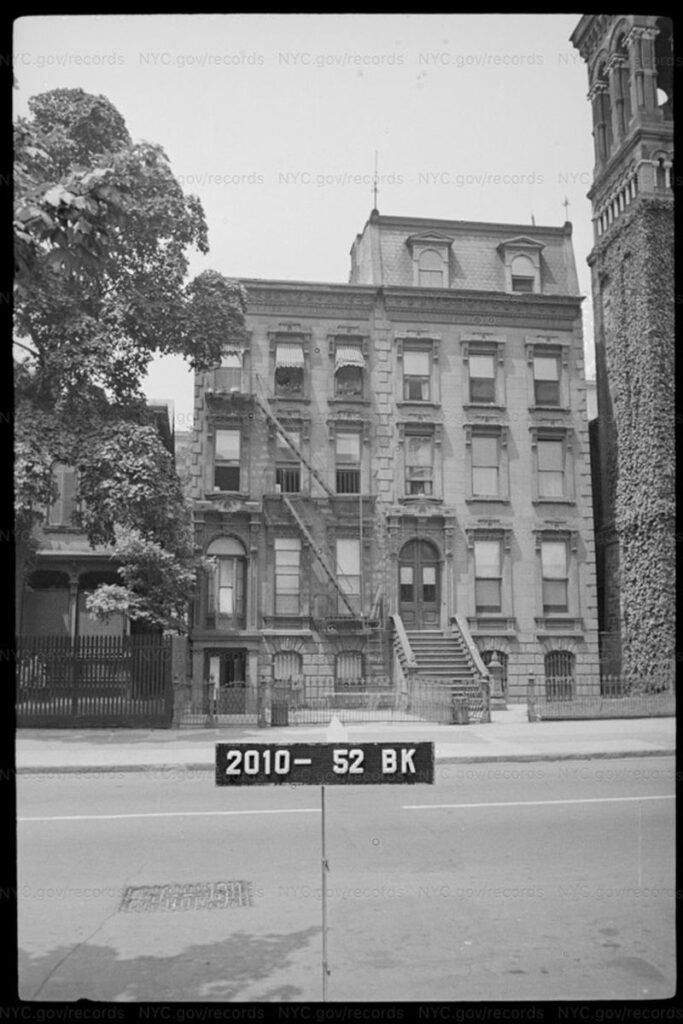
Constructed in a time when owners needed three and four stories of room for large families, they had, in those times, existed as the epitome of style and class.
Now that so much square footage so close to the city center was becoming too dear for so many residents (who did not have families or who needed much less room), builders were beginning to construct large apartment houses that provided all of the necessities of home within a smaller, but more stylish and efficiently laid out, space.
Such competition from newer construction caused the formerly beloved brownstone to lose its lucrative “soul.”
THE SOLUTION TO ANTIQUITY
In 1915, real estate broker Frank Tyler struck upon an idea that turned out to be, in essence, a paradigm change:
Take an old inefficient brownstone and turn it into a stylish and updated apartment house.
Tyler noticed that “the average three-story and basement dwelling of old-fashioned style” had “become a drag on the real estate market.”
Because of “great changes that have taken place in construction, and the popularity of apartment house living,” brownstone owners had been experiencing a decline in the rental incomes of their antiquated brownstones.
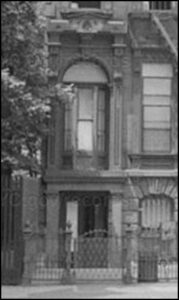
“It is hinted by several brokers,” noted the Brooklyn Daily Eagle, “that property owners should advise with their brokers on ways and means of improving their holdings: ‘the fault lies in a large measure with the people, that the real estate market is is condemned these days. Brooklyn real estate is just as good as it ever was, and if property owners would only wake up to the possibilities before them, a brighter view would be taken,” remarked a real estate broker in discussing general real estate conditions in the borough.
So, Tyler took one of those antiquated brownstones – No. 530 Clinton Avenue – an 1860s/70s-era Second Empire Mansard-style brownstone, and remodeled it in such a way as to “produce a gross rental of $1,992 a year for the property,” which, according to Tyler, “will double the rental of the property in its previous condition.
“The basement and parlor floors will constitute duplex apartments, with separate entrances,” Tyler explained. “The entire transformation will cost less than $5,000. This will be interesting news to the many owners of this style of dwelling, who are constantly complaining that they cannot rent or sell such property, and that every day their marketability decreases.
The initial step, though, in effecting this “extreme makeover,” however, was anathema to today’s brownstone owners:
First, you remove the stoop.
THE NEW “STOOP-LESS” BROWNSTONE LAYOUT
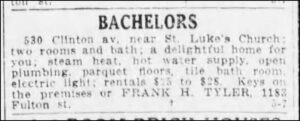
After the stoop was removed, the “remodeling” could begin. The stoop, which had allowed for a separate entrance to a brownstone, now forced all foot traffic – just as for such traffic entering an apartment house – through a single entry.
With the stoop removed, the builder moved to the inside of the structure where demolition would begin and a new layout established. The effect, it was felt, was that of a modern apartment house.
“The vestibule of the first or basement floor, is of hardwood, and the entrance is made very attractive by Colonial effects in two columns supporting an ornamental cross stone,” Tyler said. “The front living room will be 12×20 feet, with a foyer hall leading to the second floor, which is now the parlor floor. On the first floor will be the kitchen and laundry, and back of that will be the maid’s room.

“On the second floor the living room measures 12X20 feet, then comes the bedrooms, which open into the foyer hall. The bath room follows. Then there is a bedroom, 12x`17 feet, and adjoining, is another bed room, 9×12 feet. There will be eight rooms in the duplex section of the house, renting for $60 a month, including heat and hot water supply.
“The second floor will be independent of the duplex section. The living room here is 12×8 feet, the bedroom 8×14 feet. There are two closets back of the foyer hall on this floor. The back section of this floor is the same as the front. The fourth floor arrangement of rooms will be the same as the third floor. Every convenience is to be included in the building.
IF YOU BUILD IT – WILL THEY COME?
“Owing to the neighborhood changes, the families that could afford to pay a fair rent for such houses have moved out to suburban sections, and the vacated houses must be use for roomers or boarders,” said F. J. Ashfield, a builder, commenting on Tyler’s redesign of brownstone row houses.
“Income from such tenants,” he added, would take in only “$50 to $60 per month” for the entire brownstone, regardless of the quality of the house.
Just as we see with brownstone renovations throughout the city today, the economic argument, then, for converting a 2- and 3-family brownstone into a money-making apartment house was strong.
“Could these three-story houses be turned into three-family, dwellings they would rent readily for an average of $35 to $40 per floor per month after an expenditure probably of from $2,000 to $3,000 each,” Ashfield encouraged. “This would at once run their value up to from $12,000 to $15,000, whereas today thousands of them are a drag in the market at from $6,000 to $8,000…”
As you walk around the city and notice the number of brownstone houses with their facades defaced by the removal of a stoop, it is apparent how strong that economic argument was.
———————————————————————————————————————–
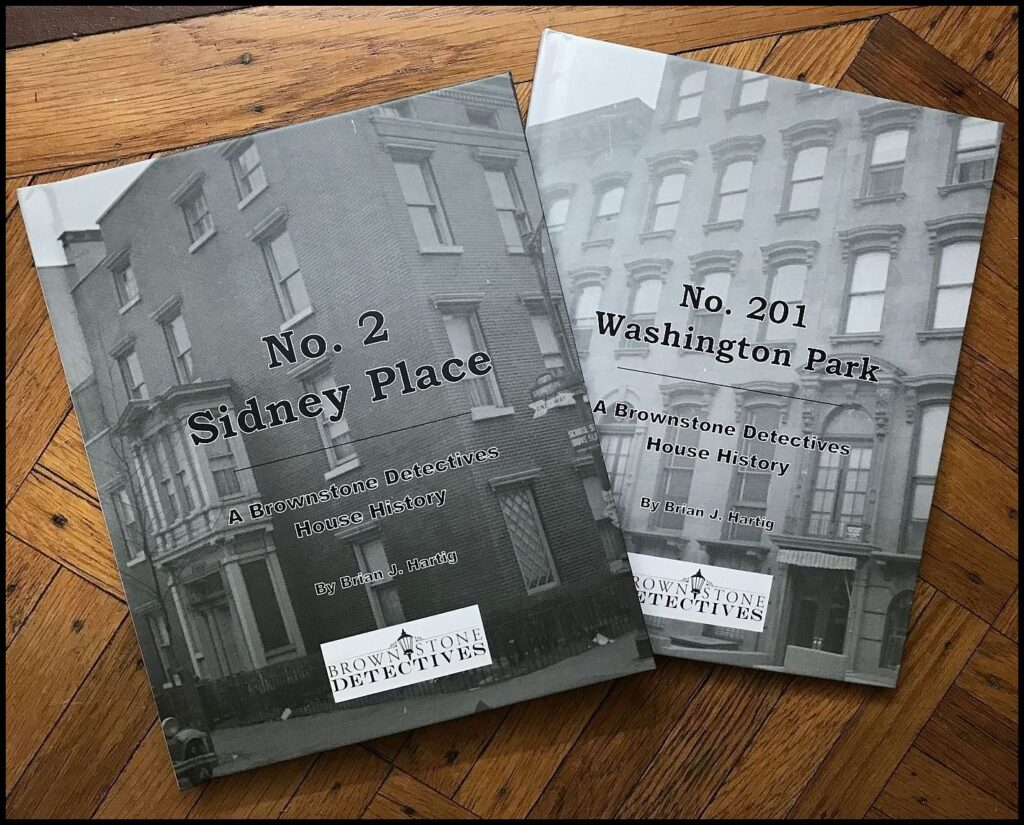 Brownstone Detectives is an historic property research agency. Our mission is to document and save the histories of our clients’ homes. From our research, we produce our celebrated House History Books and House History Reports. Contact us today to begin discovering the history of your home.
Brownstone Detectives is an historic property research agency. Our mission is to document and save the histories of our clients’ homes. From our research, we produce our celebrated House History Books and House History Reports. Contact us today to begin discovering the history of your home.